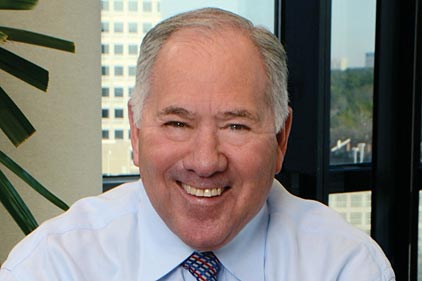
|
| Richard D. Alaniz |
When Linda Harrison was terminated from her job at a residential treatment facility in 2007, she weighed more than 500 pounds. According to a lawsuit filed by the U.S. Equal Employment Opportunity Commission (EEOC), she was fired because of her disability, severe obesity, even though she could perform the essential functions of her job. Five years later, the company settled the disability discrimination suit for $125,000.
In the case, EEOC v. Resources for Human Development Inc., 827 F.Supp.2d 688 (E.D. La. 2011), the court rejected the treatment center’s arguments that severe obesity without an underlying physiological disorder did not qualify as a disability. According to the court, the Americans with Disabilities Act (ADA) applied in this case because severe obesity can be a disability, and Harrison was a qualifying individual with a disability who suffered an “adverse employment decision” because of her disability.
“All people with a disability who are qualified for their position are protected from unlawful discrimination,” said EEOC General Counsel David Lopez in a statement. “Severe obesity is no exception. It is important for employers to realize that stereotypes, myths, and biases about that condition should not be the basis of employment decisions.”
As the Harrison case shows, the EEOC and now some courts are considering obesity a disability, and employees who are severely overweight may qualify for protections under the ADA. Today, more than ever, employers need to understand how the ADA affects their workplace, especially their hiring, discipline, and termination decisions.
Obesity in the American Workforce
More than two-thirds of American adults — 69 percent — are overweight, which is defined as a body mass index (BMI) of 25 or higher, according to the U.S. Centers for Disease Control and Prevention. Among that group, more than one-third — 35.7 percent — are obese, which is defined as a BMI of 30 or higher.
Where the ADA Comes In
The ADA prohibits discrimination and ensures equal opportunity for those with disabilities. According to the ADA, a disability is:
• a physical or mental impairment that substantially limits one or more major life activities of such individual;
• a record of such an impairment; or
• being regarded as having such an impairment.
The ADA requires that covered employers make “reasonable accommodations” for employees who have a disability, unless doing so presents an undue hardship for the employer.
When it comes to the definition of a disability, the EEOC differentiates between those who are overweight and those who are obese. The agency has stated that the ADA does not protect people who are overweight. “Just being overweight is not enough. Modifications in policies only must be made if they are reasonable and do not fundamentally alter the nature of the program or service provided,” according to the ADA’s “Myths and Facts” web page.
The EEOC and Courts Weigh In
The EEOC’s case against Harrison’s employer, Resources for Human Development, is just one of a growing number of cases relating to whether obesity qualifies as a disability under the more-expansive definitions of the ADA’s Amendments Act of 2008 (ADAAA). This signals a new direction for the EEOC, which has traditionally not treated obesity as a disability unless there was an underlying physical cause for it.
The Harrison case was followed several months later by another EEOC case involving obesity as a disability. In July 2012, BAE Systems Tactical Vehicle Systems LP agreed to pay $55,000 to settle a disability discrimination lawsuit. According to the suit, BAE fired Ronald Kratz II because of his morbid obesity and because it regarded him as disabled. Katz, who weighed over 600 pounds at the time, drove a forklift, which required him to wear a seatbelt. When the seatbelt would no longer fit, he asked for a seatbelt extender. Two weeks later, he was fired as unqualified for his job.
The agency said that at the time of his discharge, Kratz was qualified to perform the essential job functions of his material handler position and that the company did not attempt to discuss reasonable accommodations that would have allowed him to continue to perform his job.
“The law protects morbidly obese employees and applicants from being subjected to discrimination because of their obesity,” said Kathy Boutchee, the EEOC’s senior trial attorney in Houston in a statement. “So long as an employee can perform the essential job duties of a position, with or without reasonable accommodation, the employee should be allowed to work on the same basis as any non-obese employee. Employers cannot fire disabled employees based on perceptions and prejudice. Mr. Kratz had a good performance rating and did not deserve to be fired.”
Along with the EEOC, courts are increasingly becoming more open to the idea that obesity could be a disability under the ADA. In April, U.S. District Judge Stephen N. Limbaugh Jr. declined to dismiss an obesity-related disability lawsuit. In that case — Whittaker v. America’s Car-Mart Inc. — the plaintiff claimed that he was fired from his job as a general manager at America’s Car-Mart in 2012 because of his severe obesity and because his employer regarded him as being substantially limited in the major life activity of walking. He also contends that he could perform all of the essential functions of his job, with or without an accommodation. The employer argued that simple obesity is not a disability, but the District Court declined to dismiss the case, citing the more expansive definition of “disability” under the ADAAA.
What to Do Now
As federal regulators and the courts increasingly consider obesity a disability, employers need to plan ahead to ensure that they remain in compliance with all relevant laws, in order to avoid lawsuits and government investigations.
• Educate employees, managers, and supervisors.
Stereotypes and misinformation exist around those who are overweight. Employees at all levels must be educated on the issue of obesity and how to respond to co-workers and colleagues who may be overweight.
Managers and supervisors especially should receive training about how obesity could be considered a disability and how to respond when potential issues of disability-related obesity emerge. They should never make assumptions about what kinds of work-related activities overweight people can or cannot do.
• Update materials to reflect new priorities and regulations.
Companies should make a habit of out of regularly reviewing and updating their ADA-related training materials and protocols. Now is an excellent time to do so in light of the broadened interpretation of obesity as a disability.
• Work with employees.
When employees raise issues about possible disabilities and how that may impact their jobs, employers should engage in a respectful dialogue, legally known as the “interactive process,” to consider the situation and a possible accommodation. Even if employers can’t identify a reasonable accommodation without causing undue hardship, going through the process will help to prove they have satisfied all legal requirements. Remember, it’s important to document all of the steps in this process.
Supervisors and employees should also know how and when to escalate issues if they have questions, or are unsure of the next steps or company procedures.
• Review laws and rulings.
Along with federal regulations, companies must also comply with local and state regulations that generally or specifically bar discrimination against the obese. For example, in Michigan, the Elliott-Larsen Civil Rights Act prohibits discrimination against employees based on their weight, along with height, religion, race, color, national origin, age, sex, familial status, or marital status, as well as retaliation. Several municipalities also outlaw discrimination against the obese.
Companies should work closely with legal counsel and other experts to monitor changes in regulatory priorities and court decisions so they can remain in compliance.
As many American adults continue to struggle with their weight, the potential impact on their jobs can be serious. Employers need to understand what their obligations are and what the rights of their employees are, in order to maintain efficient workforces while staying within the bounds of the law when it comes to obesity as a disability.
Publication date: 6/23/2014
Want more HVAC industry news and information? Join The NEWS on Facebook, Twitter, and LinkedIn today!



Report Abusive Comment